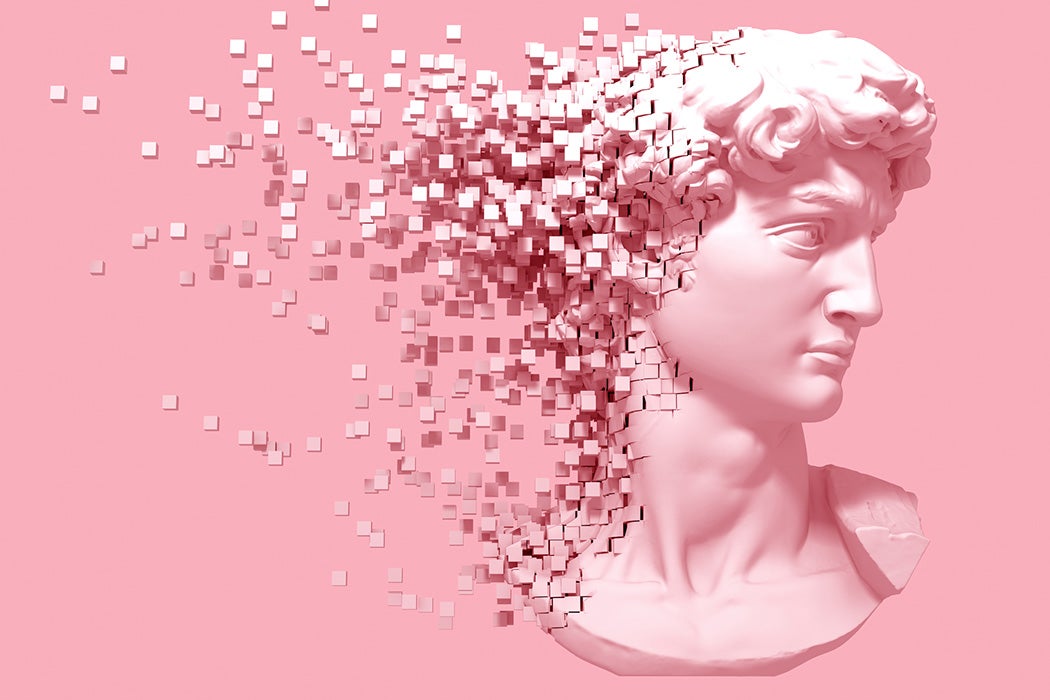The whole subject of crypto technology can seem surreal, esoteric, almost comically futuristic. So when a digital file built on blockchain technology sells at auction for $69.3 million in cryptocurrency, it’s no surprise that some people are baffled.
That’s what happened with Everydays: The First 5000 Days, by digital artist Beeple. The work is a collection of pixels, made unique, and therefore valuable, by a “non-fungible token” (NFT). This new artistic frontier is all built on blockchain, writes Amy Whitaker, an academic who specializes in the intersection of art and economics. In a 2019 literature review, Whitaker considered the huge potential for blockchain technology to bring radical change to the art industry.
In the late 1980s, Whitaker writes, cryptographer Stuart Haber and physicist Scott Stornetta created a chain of records, called a blockchain, to function as a tamper-proof ledger of time-stamped information. The technology creates a decentralized database, so the job of record-keeping no longer needs to fall on one specific body or government.
Most people learned about blockchain because of Bitcoin, a decentralized and denationalized currency that officially launched in 2009. “Although blockchain goes well beyond cryptocurrency as a tool…Bitcoin illustrates the wildly unpredictable trajectory of the invention in its early days,” writes Whitaker.
So how does a JPG come to hold value as an artwork? The question can be traced back to the company Monegraph, founded in 2014 by artist Kevin McCoy and technologist Anil Dash. It was the first platform that allowed artists to “record” or “mint” their own artwork on blockchain, writes Whitaker. She quotes Dash, who explained: “in a realm where novelty, rarity and exclusivity underpin so much of the ‘real or perceived’ value of a work, copy and paste goes from being an act of creation to an act of destruction.”
Weekly Newsletter
This is where NFTs come in. NFTs are built on a blockchain and non-fungible. Bitcoins are fungible, meaning they function as cash, and any two tokens are interchangeable in the same way that two dollar bills are. NFTs are meant to be totally one-of-a-kind—making them the perfect way to trade and acquire digital art. It is essentially creating “a limited edition” of a file that could otherwise be easily reproduced.
More than anything, crypto art and blockchain introduce questions about inherent values in the arts. “As a field, our responsibilities toward blockchain are those of scholars and practitioners but also of art audiences toward new and unfamiliar work,” Whitaker writes. Beeple’s Everydays was the first unique NFT-encoded artwork to be auctioned off by a major auction house. Some crypto-enthusiasts believe this institutional gatekeeping negates the true value of NFTs. But that’s another story.
Support JSTOR Daily! Join our new membership program on Patreon today.







